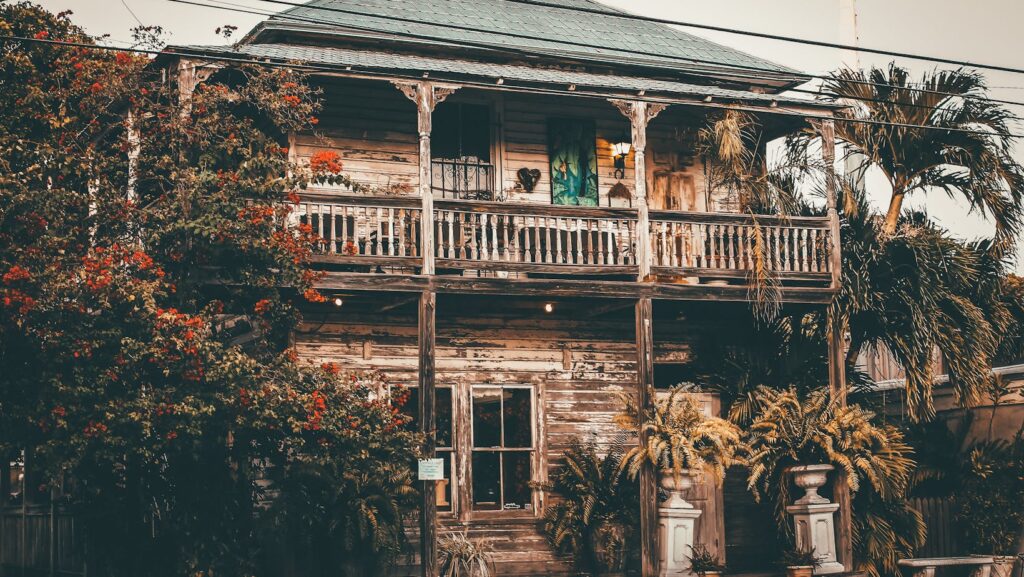The nostalgic charm of the 90s continues to captivate our hearts, and it’s no surprise that homeowners are seeking to infuse this retro vibe into their exteriors. But how does one transform a bland, outdated facade into a stylish, 90s-inspired spectacle? This article is your blueprint for a 90s house exterior makeover.
90s House Exterior Makeover
 Delving into the world of 90s nostalgia, house architecture from this iconic era stands out with its unique character. This section is a deep dive into the distinct traits and materials that marked the 90s house exterior makeover.
Delving into the world of 90s nostalgia, house architecture from this iconic era stands out with its unique character. This section is a deep dive into the distinct traits and materials that marked the 90s house exterior makeover.
90s house exteriors makeover demonstrated signature elements that mirror the spirit of the period. Primarily, the decade saw an emphasis on asymmetrical designs. Many houses featured interesting architectural shapes like trapezoids and parallelograms, deviating from traditional rectangle or square structures.
Planning Your 90s House Exterior Makeover
Assessing the Current Condition
For a successful 90s house exterior makeover, the present state of the house helps determine what needs repair, replacement, or enhancement. Primarily, it’s crucial to assess the house’s structural integrity, inspecting for any damage or wear-and-tear. This might include faded paint, cracks in the wall, damaged roofs, or deteriorating siding.
Another pivotal part of this assessment involves checking the functionality of key features of the house, such as doors, windows, and the driveway.
Setting a Budget for Your Makeover
The success of any home transformation lies in a well-prepared budget. It involves estimating the costs of materials and labor with precision. Detailed and well-documented research helps in this step. For instance, determine the cost of paints known for durability, or the charges of professionals who specialize in 90s house exterior makeover. Be sure to allocate funds for unexpected costs, for contingencies occur in most home renovation efforts.
Choosing a Design That Complements Your Home
Creating a design that adds value and elevates the look of the home is a vital part of planning. It begins with understanding the key architectural features of your 90s home. For instance, if your home showcases an asymmetrical design typical of the 90s, consider bringing out this feature in your makeover plan.
Additionally, make use of materials and colors that were prominent during this era. Undertake a study of 90s trends, like bold pops of color or minimalist themes. Utilize these insights to create a design that not only revives the 90s spirit but also enhances your home’s existing structure.
The Finishing Touches
Exterior Lighting Options
 Exterior lighting, they illuminate architectural features, deeply impacting the aesthetic of a home’s exterior. In fact, using well-placed lights can elevate minimalist designs – prevalent in the 90s – to new heights. Consider path lights, porch lights, or wall lanterns for example. These light fixtures, when installed strategically, accentuate designs, making them more striking even after sundown.
Exterior lighting, they illuminate architectural features, deeply impacting the aesthetic of a home’s exterior. In fact, using well-placed lights can elevate minimalist designs – prevalent in the 90s – to new heights. Consider path lights, porch lights, or wall lanterns for example. These light fixtures, when installed strategically, accentuate designs, making them more striking even after sundown.
Doors, not just entry points, serve as strong visual elements in revamping the façade of a house. For a 90s makeover, asymmetrical designs coupled with bold colors are preferred. As for the hardware, chrome, and nickel-finished fixtures are alluring choices. Knobs, handles, hinges, and knockers of the mentioned finishes, possess an unmistakable 90s aesthetic that fuel a retro vibe.
Enhancing with Outdoor Accessories
Outdoor accessories may seem like an afterthought in a makeover, however, they contribute substantially to the overall aesthetics. Patio furniture, garden sculptures, outdoor rugs, are a few instances of accessories that can enhance an exterior. Selecting items that reflect bold colors and adopt minimalist 90s style help evoke the right ambiance.
Must Know
Reviving the charm of a 90s house exterior makeover doesn’t have to be a daunting task. It’s all about understanding the unique features of the era, assessing the home’s current condition, and selecting a design that respects the original architecture. Budgeting is key, and integrating modern trends like minimalism, sustainability, and smart technology can add a fresh twist.
